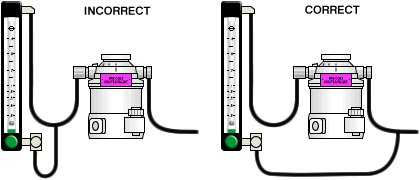 |
|||||||||||||
|
|
|
Quick-flush valve The purpose of the quick-flush is to provide a rapid source of anesthetic-free oxygen to the patient when required. Most quick-flush valves are of the spring-loaded, push-button type, but some lever-action valves may be encountered.
Notes
|
Comments on this
article should be addressed to Dr Guy
Watney
All pages © Anesthesia Service
and Equipment 1998-2003.

